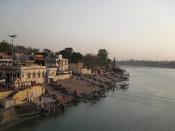Introduction - The Profile of India
India is the seventh largest country in the world with a land mass of total 3,287,590 sq km, which encompass of land: 2,973,190 sq km and water: 314,400 sq km. It is the second most populous country with a population of over 900 million people. India is located in the Southern Asia, bordering the Arabian Sea and the Bay of Bengal, between Burma and Pakistan. (Refer to Appendix 1 for a more detailed outlook on India).
The name 'India' was applied to the country by the Greeks. It corresponds to the "Hi(n)du" of the old Persian epigraphs. The spirit of India has fascinated the world with its very mystique. A civilization united by its diversity - India has always been known as a land where history echoes itself with all its wonders in every piece of stone and every particle of dust.
India possesses a distinct identity in its geography, history, culture, people, and language as well as in its natural ecosystem.
It is blessed with a wide variety of climates and soil types which permits the growing of many unique earthy roots, precious woods, aromatic spices, exotic flowers, balsamic resins and scented grasses. India's botanical treasures have many fascinating worlds to discover throughout the country.
A new spirit of economic freedom is now inspiring the country, bringing comprehensive change to its economy. A sequence of determined economic improvement aimed at deregulating the country and stimulating foreign investment has moved India firmly into a
position of the rapidly growing Asia Pacific region and set free the hidden strengths of a complex and fast changing nation.
India's economy embraces traditional village farming, modern agriculture, handicrafts, a wide range of modern industries, and a multitude of support services. Unfortunately, overpopulation in the country has severely handicapped...


